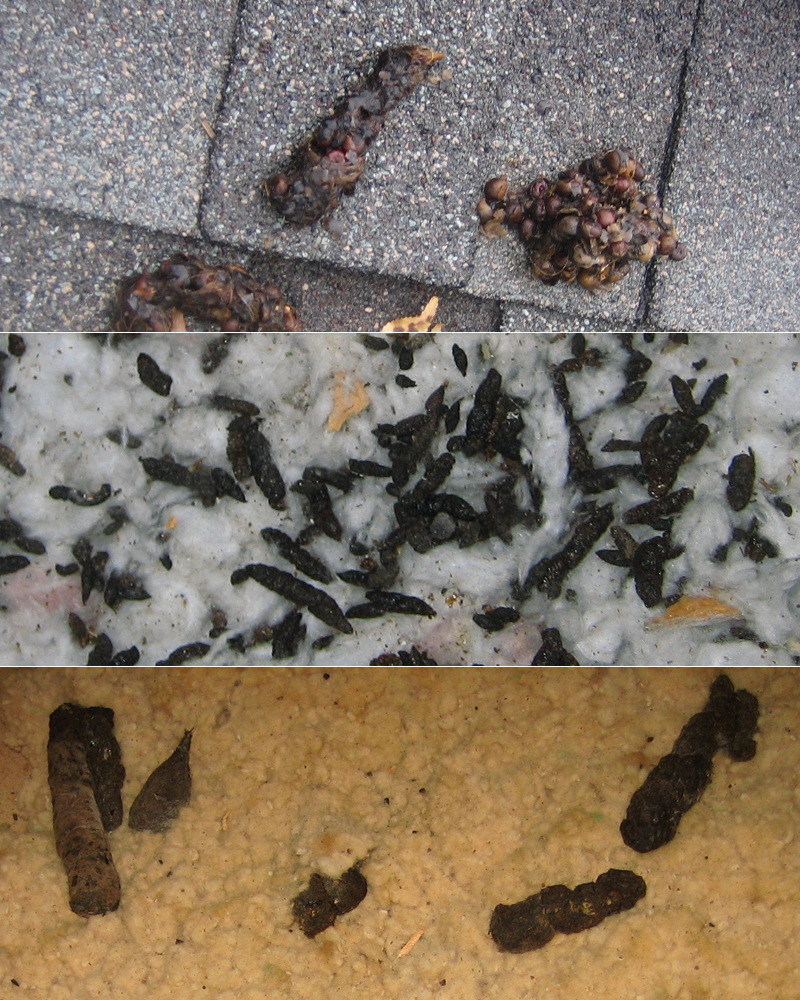- USA Wildlife Removal Education Guide and Resources
Dangers of Wild Animal Feces - How to Identify

Wild Animal Feces
One of the most common things that you can encounter in areas where there are wild animals present is their feces, and while it isn't always clear to see and will often have been covered, it is always worth being cautious when dealing with this material. Pets and domestic animals will often be drawn by their natural curiosity to investigate the feces, while it is important to try and deter them from this natural instinct, as they too can suffer from diseases in the feces. While it is best to try and take measures prevent wild animals from coming within range of your property to leave their feces, there are ways that you can remove and clean the feces too, but it is very important to do this correctly and safely.
Where Are You Likely To Find Wild Animal Feces
In the wild, many animal species will tend to choose one area which they will use as a latrine and where they will deposit most of their feces, and if this is near your property then it can be a source of disease as well as being unhygienic. These species will usually be larger wild animal species such as raccoons and coyotes, although those animals that do have much larger territories will often have several latrines that they use as they are traveling.
When it comes to rodents and smaller animals, their behavior can vary with some species using a latrine and others depositing their feces as they go. Rodents and other animals that find their way into an attic or a roof space will often use insulation material as a latrine, and seeing the urine stains and feces in the material itself can be a sign that you have a significant animal problem to deal with in the roof.
Identifying The Wild Animal From Its Feces
While it can require an expert to be able to attribute an individual species when you spot and examine animal feces, there are general rules that can give you a good idea about what type of animal you may be dealing with. Small rodents such as rats and mice can often be distinguished because their feces is formed into small pellets that may look like seeds, with a black or dark brown color. Raccoons, foxes and other larger mammals will usually have larger feces that is easier to identify, and depending on the diet of the animal this will usually be black and speckled with seeds, or dark brown in color.
When it comes to birds and bats, these feces are usually dropped, so if you have one of these animals nesting in an attic, barn or other part of the property, it will often mount in piles. Bat guano is usually black, and will usually look like a long pellet. Most bird feces will have elements of white in the color, which makes it quite distinctive.
Diseases Transmitted By Wild Animal Feces
There are two ways in which diseases can be transmitted from wild animal feces to people and domestic animals, and this will either be through the consumption of food or drink contaminated with the feces, or by inhaling spores that are released from the feces. Those diseases that are transmitted by inhaling the spores are quite serious, and include Hantavirus and Leptospirosis, which can both start off with flu symptoms but can quickly become much more serious. There are a greater variety of diseases that can be caused by the consumption of contaminated food and drink, and these include salmonella, e.coli and roundworm.
Precautions To Take Before Dealing With The Feces
There are certain steps that you will need to take before you can clean and remove any animal feces, and the first step is to make sure that you have the right equipment such as a mask that will prevent you from inhaling any spores, a pair of gloves and a sealed container or a bag that can be sealed which will be used to remove the feces. It is also important to make sure that any cuts or grazes are completely covered, as diseases can also be transmitted by physical contact with the feces. Professionals who come into regular contact will also choose to wear goggles, as this will help to protect the eyes from any contact too.
Cleaning And Disposing Of Animal Feces
When it comes to removing the feces, this can either be done by picking it up and placing it in the bag or container, or you can use a small trowel to move the material. One useful step is to try and move any loose feces first, and then go back to try and remove any fecal matter that is stuck or difficult to get to. If you are removing the feces from an attic or roof space, you will usually need to cut out any contaminated pieces of insulation and then to replace this material.
Click to see photos of animal feces from these species:
Bat Feces
Opossum Feces
Raccoon Feces
Rat Feces
Skunk Feces
Snake Droppings
Squirrel Feces
Go back to the main How to Get Rid of Wild Animals page for more information about animal trapping and information about Dangers of Wild Animal Feces - How to Identify.

